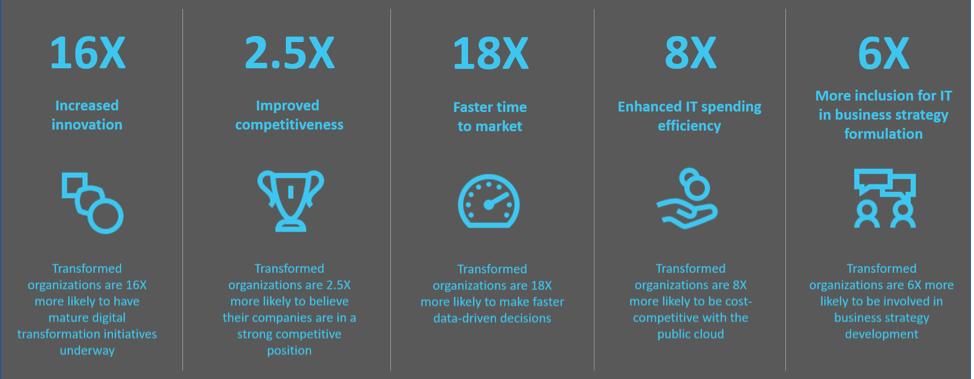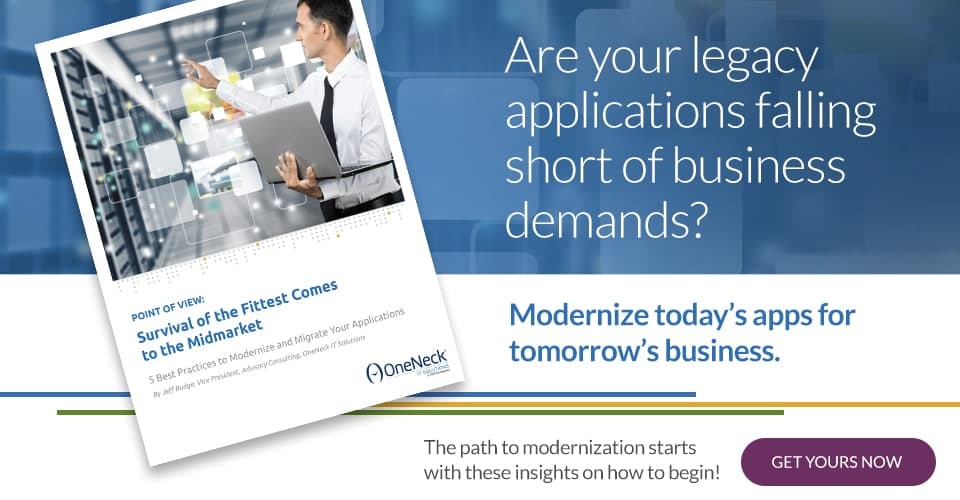Difference Between IT & Digital Transformation | OneNeck IT

The terms IT transformation and digital transformation seem to be everywhere these days, and often are used interchangeably. However, while they are very connected, there is a difference. In a recent paper by the Enterprise Strategy Group and sponsored by Dell EMC, they define the two terms as such:
- Digital transformation emphasizes evolving to thrive in a digital economy—for example, using smart devices, connected sensors, and data-driven insights to out-innovate, out-think, and out-pace competitors. Digital transformation focuses on embracing change to become the disruptor, not the disrupted.
- IT Transformation centers on modernizing the underlying technology infrastructure. The business becomes “more transformed” by growing beyond its reliance on rigid, manual, hard-to-maintain legacy technologies. IT Transformation enables speed, efficiency, scale, and cost-effectiveness—automating manual tasks and streamlining operations to free up resources and fuel digital transformation initiatives.
They maintain that this distinction is important, as focusing on IT transformation allows organizations to prioritize technology initiatives to better support the larger digital transformation journey, and the benefits are hard to dispute.

The report goes on to break IT transformation into three levels, based on an organization’s maturity:
- Modernized data center technologies—Transformed organizations take steps such as virtualizing their servers. They use all-flash storage where appropriate. They run a considerable portion of their workloads using scale-out and converged or hyper-converged infrastructure platforms. They commit to a software-defined approach for networking and storage. And they adhere to a comprehensive and well-tested data protection strategy with the best-available backup, deduplication, and archiving tools at its foundation.
- Automated IT processes—Transformed organizations automate their environments to help them deliver IT as a service in a cloud-like model for cost transparency, efficiency, and responsiveness. They incorporate automation to support server change configuration and storage provisioning. And they offer self-service capabilities so end-users can order and manage on-premises resources as needed.
- Transformed organizational dynamics—Transformed organizations believe in tight business and IT alignment, and business units regularly inspect IT outcomes for effectiveness. The IT organization’s executives almost always report directly to the C-suite leadership team, making it easier for IT to contribute to business strategy. Transformed organizations also often adopt DevOps principles and methodologies.
But it goes beyond just defining the levels, because only when it’s applied to a specific organization can it begin to be useful. Based on their research and data, ESG created a maturity model to be used as a guide to assess IT transformation maturity. Not surprisingly, there is a growth in maturity over last year, though still plenty of room for growth. But as businesses grapple with the need to modernize, more are realizing that it requires tight alignment with IT, and this alignment is key in competitive differentiation.





